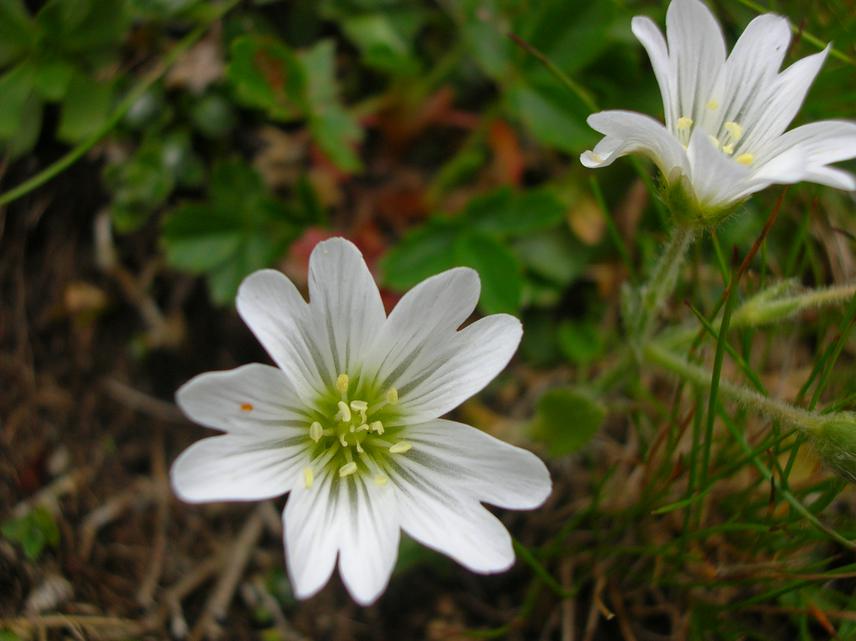Adalbert Balog
A trough survey of flora and fauna in the Lake region.

Cerastium sp.
The Balea Lake and his region situated in the South Carpathian zone (Transylvania) is one of the most valuable habitats, holding a unique and endemic flora and fauna, for many of these is the last refugee in Europe. During the previous investigations more than 20 endemic and extremely rare plant species were identified, some of them can be found only in this region (Aquilegea transsilvanica, Achillea schurii, Aconitum hosteanum, Alopecurus laguriformis, Helictotricon decorum, Campanula kladniana, Cerastium lerchenfeldianum, Leontodon transsilvanicus, Silene dinarica). In point of the fauna, two insect species (rove beetles Niphetodes schőnmani, Pareudectus eppelsheimi Colepoptera: Staphylinidae) were identified, new for the science and endemic for this region (described by Lothar Zerche in 1990).
Although the biggest lake region (Lake Balea - 2.034 m above sea, 46.508 m2, 11, 35 m deep) were proposed for protection in 90th, in last 15 years suffered a high degradation. The incorrect management, the commercial tourism, and the illegal fishing in lakes have highly negative effects on flora and fauna, birds and mammals become extremely rare some species even disappeared.
Our previous works were based on species investigation, now we intend to make a trough survey of flora and fauna in the Lake region.
We intend to make a trough survey of flora and fauna in Bale Lake region (120.45 ha). During the investigation (one year) we would like to identify the endangered species and their threatened habitats.
We are going to start programs of nation wide, long-term protection of the Balea Lake region with the following long lasting contribution and objectives:
/ Assessing the most threatened plant and animal species and identifying other endangered and rare species.
/ Consequently, monitoring the endangered plant and animal species and developing the human resource element by building a network of NGOs that will deal with nature conservation.
/ Public awareness - via media - raising public awareness on high human disturbance – on different TV stations (local, national TVs) and articles in local and national newspapers.
/ Preparing leaflets, organizing presentations.
/ Making effective protection measures for developing one new protected area.
The expected results will be achieved through strong cooperation between NGOs and national institutions and the involvement of local stakeholders in the process.